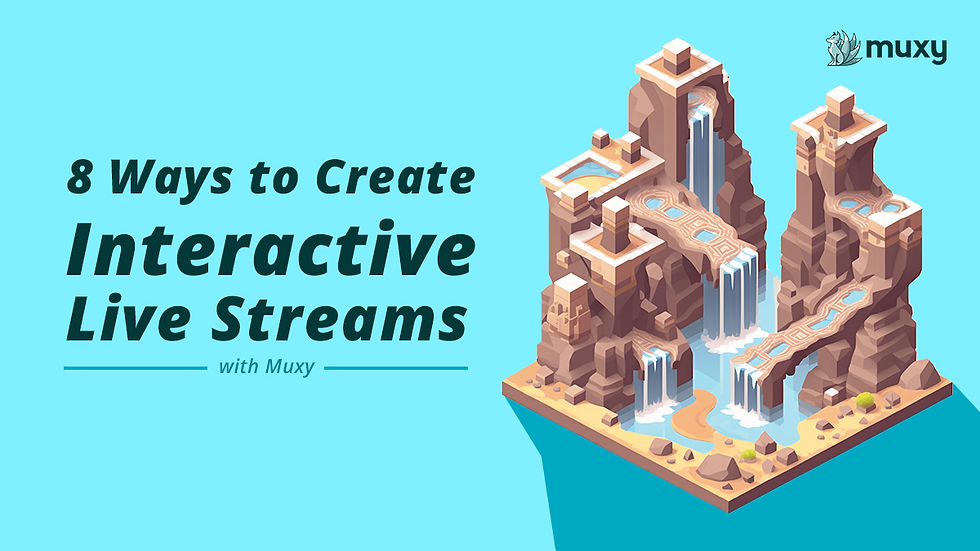What We Learned About Audience Interactivity from Creating the Expeditions: Rome Twitch Extension
- Vince Bonanni

- May 12, 2023
- 3 min read
Updated: Jun 23
Higher game impact doesn’t always equate to higher audience satisfaction

In 2021, alongside THQ Nordic, we created the Expeditions: Rome Twitch extension. This is the deepest, most feature-rich game integration ever built. There were three primary components available at different stages of the game that let viewers direct and learn more about the game. At all stages, viewers could see active quests, view player roster, and other gameplay-educational features. When key moments were triggered, the extension allowed for a dialogue vote to popup letting the audience guide the overall game direction. And the most groundbreaking element? The extension-based combat mini map. The map lets audiences see the entire field of battle, see health and status of units, and apply powerful status effects to the field of play. The response to this extension taught us multitudes about what types of interactivity audiences love and what is less relevant to them.
Check out a video of streamer reactions to the extension:
There’s always a right or wrong way to create audience interactions and only sometimes is it obvious which is which. When it comes to Streaming Interactivity and Muxy, we’ve learned through experience how to strike the balance between impact and viewer satisfaction. Over nearly a decade making extensions, we’ve released production software that enhances interactivity for viewers on Twitch. These software tools allow audiences to directly influence gameplay, vote, and learn more about games. However, not every aspect of an extension will be as compelling as we think it’s going to be.
When we designed the features for the Expeditions: Rome extension, we wanted to make sure people could have a big impact on gameplay in battles. To this end, we broke down the game's existing Buff/Debuff system and gave viewers direct control over applying these effects to both the enemy and the streamer’s own characters via the Combat Map. We also added a few environmental effects and some ability to influence the AI, and that's where we found our first lesson.
One of the effects we allowed people to cause was setting a fire on the ground in-game. The fire did damage, applied a damage-over-time debuff, and most importantly created a big ol’ fire right in the middle of the game. Starting fires was massively popular. The high impact combined with the flashy visuals and immediate feedback from the streamer all mixed together to form a potent combination. These are the types of interactions you want in your game if you want it to be an interactive experience.
Watch a short video of the fire effect in action:
The buff and debuff system was very powerful and had a very heavy impact on the gameplay. There was a problem with the interactions that utilized this system, however. While they could swing the entire tide of battle, they didn’t offer much visual feedback or immediate reaction from the streamer. Despite being arguably the most effective interaction offered, the buff Savage was very seldom used. Savage, when applied to a unit, forces their next attack to be a critical attack. Critical attacks always deal double the full damage of the weapon and thus a critical is a massive swing in momentum. Audiences however were not concerned. They would rather spend twice as much money to start a less impactful but more visually interesting fire.
Less flashy, but high enough gameplay impact to elicit a response from streamers were the disarm or full heal abilities. These provided clippable in-game moments because of the response. Players would frequently heal units to get a shout out from streamers or disarm the streamer’s current unit right before an enemy encounter. This encouraged streamer feedback and a hearty response from chat. With zero gameplay impact, but high visual feedback, renaming was incredibly popular. It wasn’t uncommon to see a streamer with a massive chunk of the battlefield renamed after Twitch chat. If streamers can see what the audience is doing, it makes it incredibly easy for them to react and build a rapport with their audience.
Additional streamer reactions to the released extension displaying polling, fire, and an army of named units:
Ultimately, balancing impact and interest is a difficult task. Try to remember the lesson we learned with Expeditions: Rome. Flashy visuals and streamer reaction are far more important to draw people into using your extension than actual game impact. But if you can combine the two, it creates an incredibly potent addition to streams of your game.





Comments